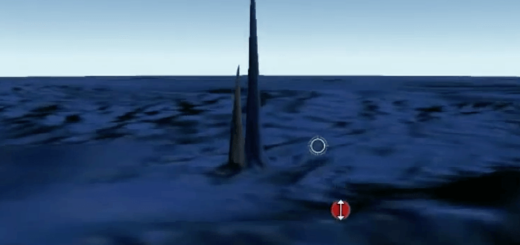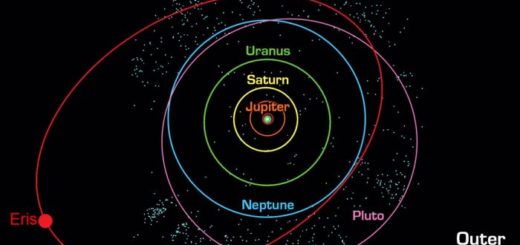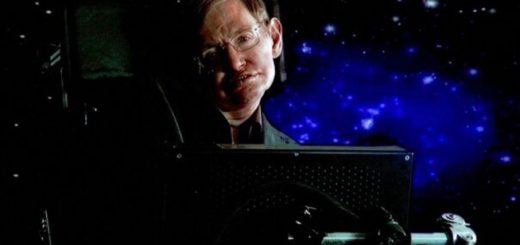South African telescope captures stunning image of radio galaxy

A stunning new image from the South African MeerKAT telescope captures powerful radio emissions woven through space.
The radio emissions emanate from an enormous rotating black hole that lies at the center of an elliptical galaxy known as IC 4296. Energy released by matter falling into the black hole generates two radio jets of high energy gas on opposite sides of the galaxy — creating what is also known as a double-lobed radio galaxy.
Using the South African Radio Astronomy Observatory’s (SARAO) MeerKAT telescope, located in the southwest Karoo region of the country, researchers detected the radio waves from IC 4296, along with other unique cosmic features that may reveal new clues about large radio galaxies, according to a statement from the SARAO.
Related: 10 huge black hole findings from 2020
Click here for more Space.com videos…
CLOSE
Recent observations of IC 4296 revealed that the radio jets become unstable as they travel beyond the outer reaches of the galaxy, allowing some of the charged electrons to escape into intergalactic space. These stray electrons create several faint radio “threads,” which appear below the galaxy in the new image.
The MeerKAT radio data — represented by the red-orange colored gas in the composite image — also captures smooth “ribbons” between the bright emission jets and outer lobes located on either side of the galaxy. The radio lobes are caused by the interaction of a jet with its surrounding medium. The ribbons fill channels that the jets have carved into the surrounding gas. Nearly 1 million light-years from IC 4296, the ribbons are met by intergalactic gas, creating “smoke rings” in the radio lobes, according to the statement.
“Only MeerKAT’s unique combination of sensitivity, angular resolution and dynamic range allowed the discovery of these threads, ribbons and rings,” Jim Condon, lead author of the study from the U.S. National Radio Astronomy Observatory, said in the statement.
The intergalactic threads, ribbons and rings captured in the recent MeerKAT radio data represent a never-before-seen combination of cosmic features, according to the SARAO statement.
STEREO-A’s view of the inner solar system between May 25 and June 1, 2020. Comet ATLAS streaks down across the screen as the planet Mercury enters at the left of the frame; meanwhile, the solar wind blows out from the sun on the left.
STEREO-A’s view of the inner solar system between May 25 and June 1, 2020. Comet ATLAS streaks down across the screen as the planet Mercury enters at the left of the frame; meanwhile, the solar wind blows out from the sun on the left. (Image credit: NASA/NRL/STEREO/Karl Battams)
“Only MeerKAT’s unique combination of sensitivity, angular resolution and dynamic range allowed the discovery of these threads, ribbons and rings,” Jim Condon, lead author of the study from the U.S. National Radio Astronomy Observatory, said in the statement.
The intergalactic threads, ribbons and rings captured in the recent MeerKAT radio data represent a never-before-seen combination of cosmic features, according to the SARAO statement.
The South African MeerKAT radio telescope, which saw first light in 2018, is a precursor to Square Kilometre Array (SKA), which aims to answer fundamental astrophysical questions about the nature of objects in the universe with dishes scattered across South Africa and Australia.
“It is clear that new results like this from MeerKAT and other SKA pathfinders are set to overhaul our understanding of extragalactic radio sources,” according to the statement.
The recent findings have been accepted for publication in The Astrophysical Journal.



 Creators of mankind
Creators of mankind Description of “Tall white aliens”
Description of “Tall white aliens” Where they came from?
Where they came from? About hostile civilizations
About hostile civilizations The war for the Earth
The war for the Earth “Tall white aliens” about eternal life
“Tall white aliens” about eternal life Video: “Nordic aliens”
Video: “Nordic aliens” Aliens
Aliens Alien encounters
Alien encounters The aliens base
The aliens base UFO
UFO Technology UFO
Technology UFO Underground civilization
Underground civilization Ancient alien artifacts
Ancient alien artifacts Military and UFO
Military and UFO Mysteries and hypotheses
Mysteries and hypotheses Scientific facts
Scientific facts


















